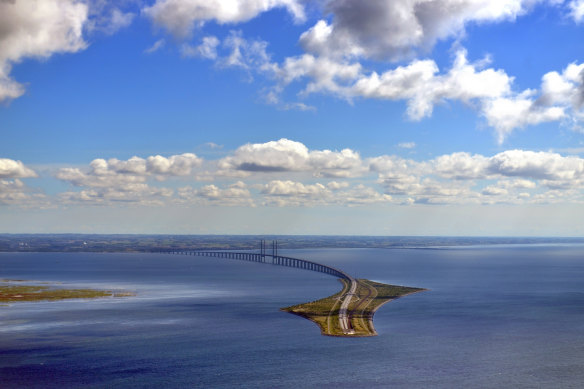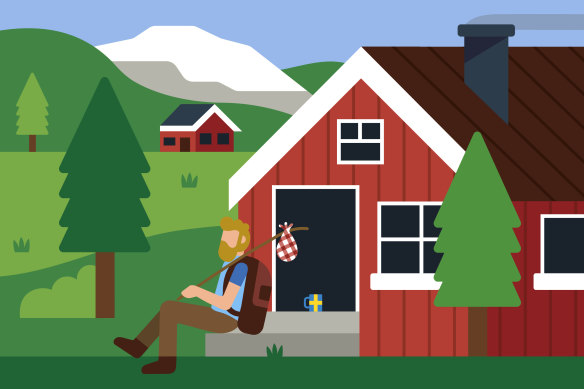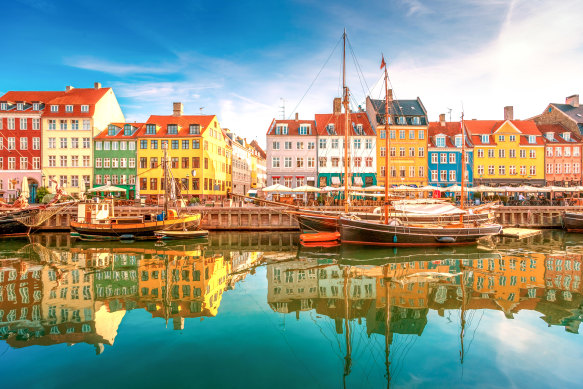This was published 1 year ago
How to do the most expensive part of Europe on the cheap
Denmark, Sweden and Norway are expensive, but there are ways to save money in these amazing travel destinations.
To save money before you even arrive, familiarise yourself with Scandinavia’s geography. If you’re visiting south-west Sweden, for example, you’ll get better value by flying into Copenhagen airport, which is far closer than Stockholm airport – and also offers many more budget flight options from other European countries.
Similarly, hotels in Malmo in Sweden are considerably cheaper than those in Copenhagen, yet the train commute takes just 40 minutes across the spectacular Oresund Bridge.

The remarkable Oresund Bridge connecting Sweden and Denmark.Credit: iStock
Plan well ahead. Regional airline and train tickets are much cheaper the further in advance you book. Consider a single-country Interrail pass for train travel; value is especially good if you’re younger than 28 or older than 59.
Summer (June to August) is the most expensive time to travel. As long as you don’t mind cooler temperatures, April to May and September to October are fine months, and you’ll enjoy lower prices on hotels and transport.

Credit: Greg Straight
Don’t rule out winter for a different experience, but pick the right weeks. Christmas is high season, so are school holidays in the second half of February, during which Scandinavians head off on ski trips and family visits.
If you don’t mind basic travel, you can camp out almost anywhere you like in Norway and Sweden, and many wilderness cabins are free. All of Scandinavia has a great network of hostels, as well as a lively volunteering scene where you can swap light farm work or household chores for a free bed and some meals. It’s a great way to meet locals.
Eating out is expensive. If ever you’re going to book self-catering accommodation such as a hostel or Airbnb, do it in Scandinavia. Stock up at suburban supermarkets – preferably budget ones such as Aldi, Netto or Lidl – rather than downtown convenience stores.
It pays to trawl websites and social media because many Scandinavian restaurants and bars offer discount enticements such as dishes of the day, happy hours or special promotions. Aim to have your main meals at lunchtime, when restaurants offer lower-priced set menus.

In Copenhagen, tourist passes are good value.Credit: iStock
Go teetotal. Alcohol is wincingly expensive in restaurants and stores thanks to government taxes and monopolies. The only exception is beer from supermarkets in Denmark.
Scandinavian travel is expensive even for residents, and many ways are offered to ease the pain. Many museums and music festivals are free. In cities, tourist passes such as the Copenhagen Discover Card and Oslo Pass are good value, providing you intend to see and do as much as possible.
The non-profit Swedish Tourist Association (STF) aims to promote nature and culture. You’ll pay SEK345 ($50) annual membership fee – SEK550 for the whole family – but benefit from discounts on activities and accommodation.
Check official tourism websites for free activities. In Copenhagen, for example, Green Kayak allows you a free paddle as long as you collect litter along the way. The view from the tower at Christiansborg Palace is free as well, and saves you DKK40 ($8.80) on the better-known Round Tower.
Sign up for the Traveller newsletter
The latest travel news, tips and inspiration delivered to your inbox. Sign up now.